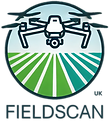Biodiversity and Wildlife Monitoring
Step 1: Pre-Flight Planning (max 450 ha/day/drone)
We begin by assessing your location and defining the survey area using satellite imagery and field boundaries.
Flight paths are optimised for efficient coverage and data accuracy depending on the survey type

Step 2: Drone Survey Execution
-
Flight Speed: ~15 mph
-
Flight Height: 100 meters
-
Coverage: ~1 hectares per minute
-
Details: Focuses on identifying vegetation patterns and wildlife habitats. Higher flight speeds, altitude allow for more ground coverage
Step 3: Data Upload & Processing
The larger the Ha area, the longer the upload and data processing takes. Whilst the process is largely automated it does require our judgment at certain key stages. These are typical times for upload and processing a 100 Ha: -
-
(5-6 hours) Generate an Orthomosaic and apply vegetation indices to highlight biodiversity zones.
-
(1-2 hours) Use Zone Mapping to identify areas of ecological importance.
-
(1 hour) Export maps and reports for conservation efforts.
Step 4: Report Generation
Output/Report
-
Vegetation Index Maps: NDVI, NDRE maps to highlight biodiversity zones.
-
Orthomosaic: High-resolution field imagery for habitat analysis.
-
Zonation Reports: Classification of areas based on vegetation diversity.
File Type Options
-
Orthomosaic & Vegetation Indices: GeoTIFF (.tif), PDF, PNG
-
Zonation Maps: SHP, CSV, PDF
